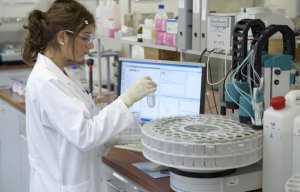
New Standard 100 by Oeko-Tex test criteria come into force
The new test criteria for product certification under OEKO-TEX Standard 100 which were published by the International OEKO-TEX association at the beginning of the year became mandatory for all certification processes on 1 April, when the three-month transitional period came to an end. “The OEKO-TEX association would like to take the opportunity to point out to all companies that OEKO-TEX certification also covers all textile-relevant SVHCs (substances of very high con

6th April 2011
Innovation in Textiles
|
Frankfurt

The new test criteria for product certification under OEKO-TEX Standard 100 which were published by the International OEKO-TEX association at the beginning of the year became mandatory for all certification processes on 1 April, when the three-month transitional period came to an end.
“The OEKO-TEX association would like to take the opportunity to point out to all companies that OEKO-TEX certification also covers all textile-relevant SVHCs (substances of very high concern) on the ECHA candidate list - including the eight chemicals added most recently on 15 December 2010 under the REACh legislation,” an OEKO-TEX statement said this morning. “Each OEKO-TEX certificate also confirms that the certified articles comply with the current requirements of Annex XVII of the REACh regulations on restricted substances such as azo dyes and nickel.”
With its extensive and annually updated list of test criteria, the OEKO-TEX Standard 100 has been ensuring since 1992 that undesirable substances are effectively excluded from the manufacture of textile products of all kinds, while, in its human ecology specifications, it goes well beyond legal requirements in some cases.
Ever since the REACh regulations were first implemented, the OEKOTEX Association has also been paying close attention to the SVHC substances that are identified and published in the candidate list. If new candidate substances are relevant to textile production and are not yet included in the list of criteria as separate test parameters, then OEKO-TEX checks whether to include them explicitly, so as to facilitate comparisons with other harmful substance regulations.
“This is why, for example, short-chain (C10 to C13) chloroparaffins and tris (2- chloroethyl) phosphate have been listed by name in the OEKO-TEX criteria since the start of the year, even though both groups of chemicals have long been banned under the OEKO-TEX Standard for use as flame retardants in clothing textiles,” OEKO-TEX says, adding:
“Under the current terms of the REACh regulations, all companies in the EU are obliged to inform customers and end users and (as of the start of the year) from 1 June 2011 also to notify the ECHA if the goods they produce contain SVHC substances in volumes of more than 0.1% by mass and the total volume exceeds one tonne per year.”
More information on the new OEKO-TEX test criteria and REACh compliance can be obtained from member institutes of the International OEKO-TEX Association (www.oeko-tex.com/institutes ).
“By complying with the latest OEKO-TEXtest criteria, companies can be confident that they are also complying with the relevant conditions of the REACh regulations on harmful substances,” OEKO-TEX says.

Business intelligence for the fibre, textiles and apparel industries: technologies, innovations, markets, investments, trade policy, sourcing, strategy...
Find out more